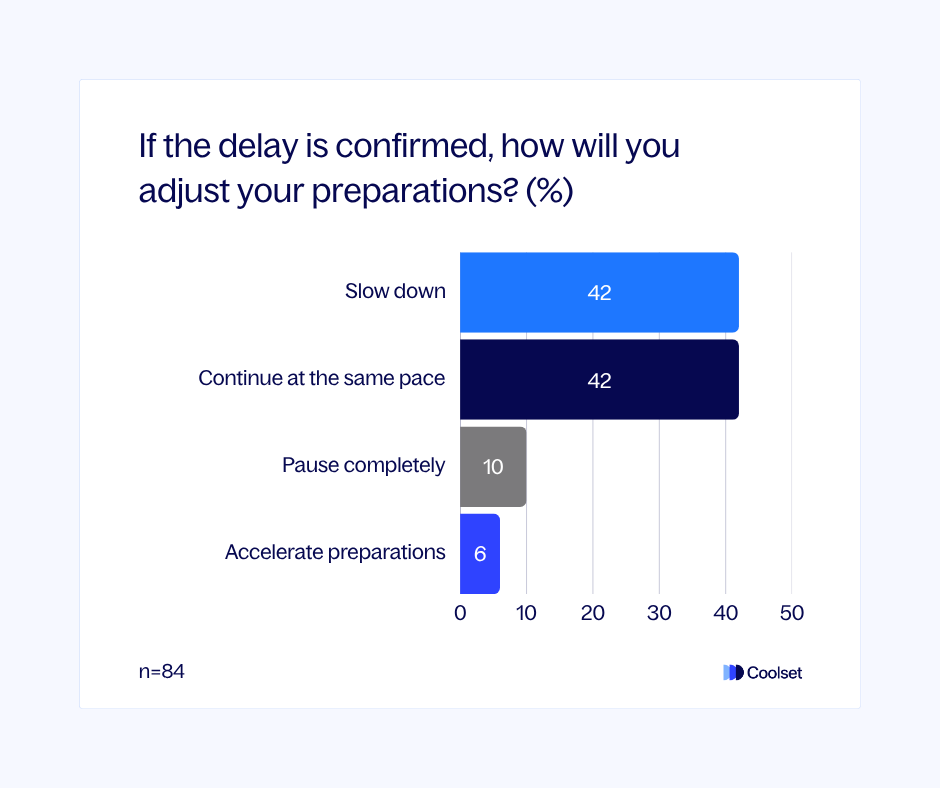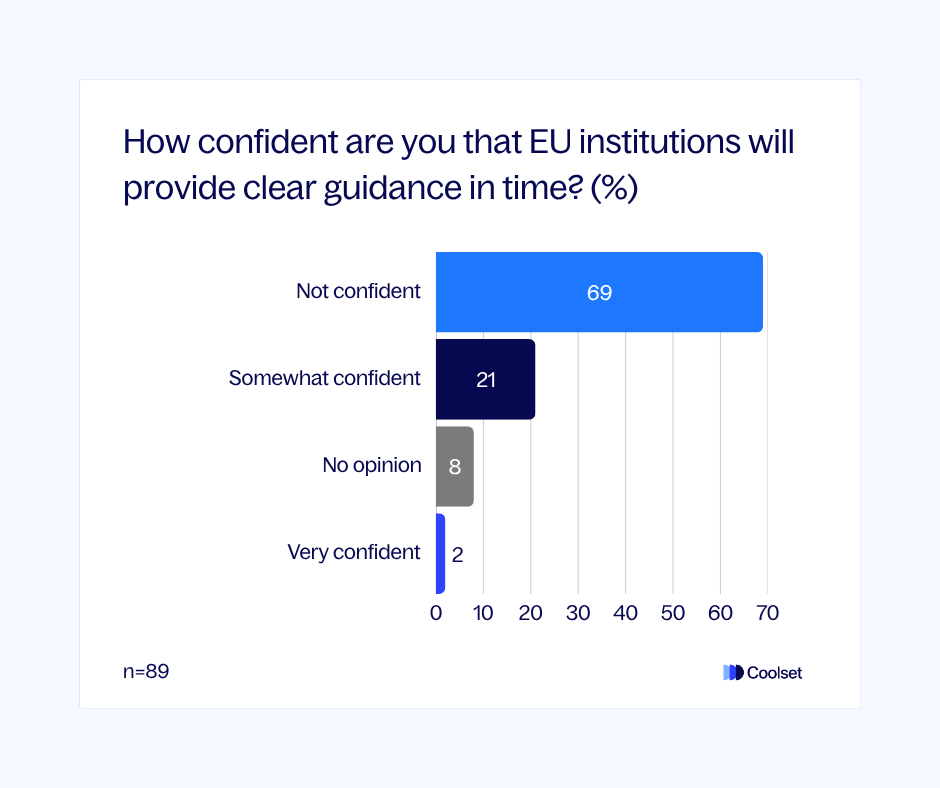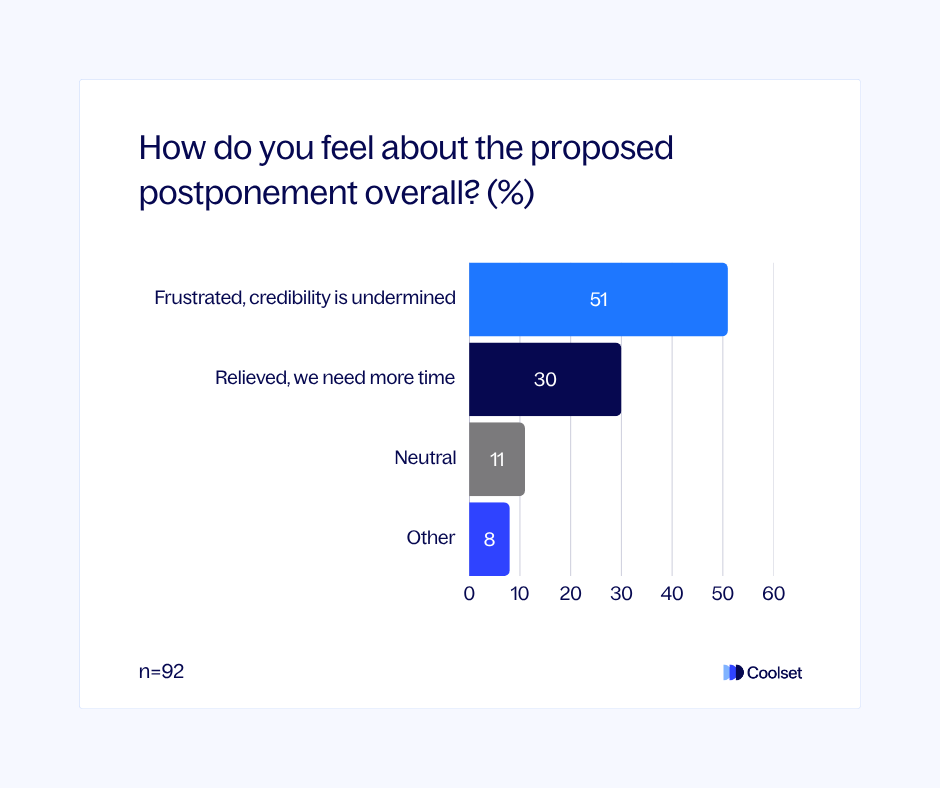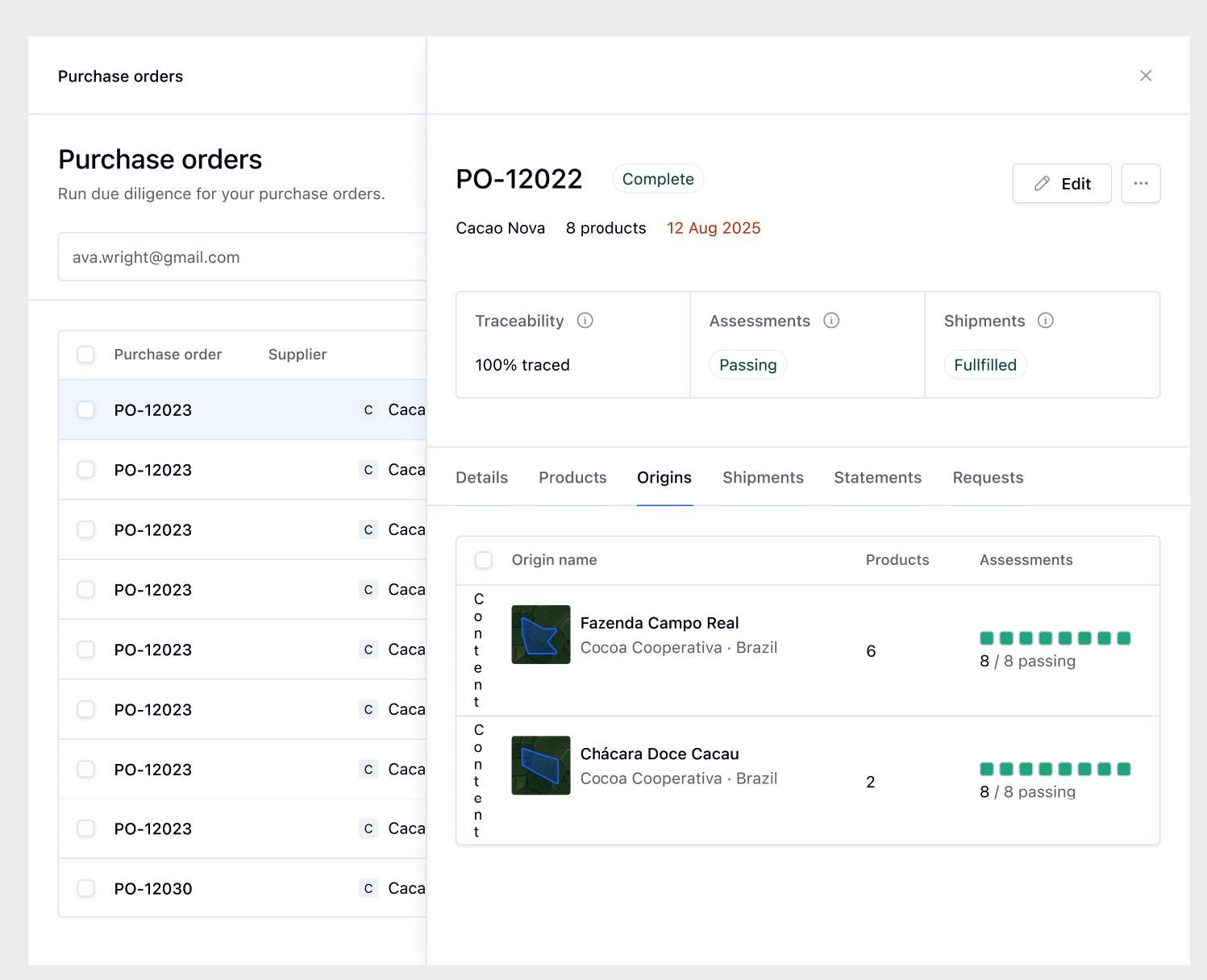
Disclaimer: Latest EUDR developments
On 21 October, the European Commission proposed targeted changes to the EU Deforestation Regulation (EUDR). These adjustments aim to make the rollout smoother without changing the regulation’s overall goals.
Key points from the proposal:
We're closely monitoring the development and will update our content accordingly. In the meantime, read the full explainer here.
In September 2025, Commissioner Jessika Roswall sent a letter to the European Parliament’s Environment Committee and the Council proposing a one‑year postponement of the EUDR’s enforcement. The intent is to shift the compliance deadline from 30 December 2025 to 30 December 2026 for large and medium enterprises.
Roswall’s rationale centers on technical readiness: she argues that the central IT system (TRACES, or the EUDR information system) may not be able to handle the projected load of registrations, interactions, and due diligence statement submissions. Revised traffic projections, she notes, show an “upward reassessment” of the system load, with a risk of “slowdowns or repeated long‑lasting disruptions” if launched as currently scheduled.
But crucially, nothing has been legally changed yet. The Roswall letter is a political signal, not a legislative act. Until Parliament and Council formally propose and pass an amendment under the ordinary legislative procedure, the enforcement date remains 30 December 2025.

{{custom-cta}}
The insights in this article are drawn directly from responses submitted during our October 2025 webinar, “Debating the EUDR delay: what companies should do now”.
During the live session, we ran a series of structured poll questions to understand how companies are reacting to the proposed one-year delay to the EU Deforestation Regulation (EUDR). A total of 92 participants responded to our survey - primarily mid-sized importers, operators, and compliance leads across timber, coffee, cocoa, and rubber supply chains.
We focused on capturing:
This article presents a synthesis of those responses.
When asked how companies were responding to the proposed delay of the EU Deforestation Regulation, the majority of respondents (91%) said they are continuing their EUDR preparations. Out of these, 42% will continue at the same pace, and another 42% plan to slow down their preparations, and 6% plan to accelerate their preparations.

This suggests that companies see the delay as a potential buffer - not a reason to stop. Many appear to be taking a pragmatic stance: continue the work, manage internal expectations, and stay flexible in case the legal deadline holds.
But the uncertainty is weighing on teams. When asked what concerns them most about the proposed postponement, 47% of companies pointed to unclear timelines, followed by supplier confusion (25%) and risk of wasted investments (9%).
.png)
One of the clearest signals from our October 2025 webinar poll was a shift in how companies perceive the EU’s regulatory stability. When asked how confident they were that EU institutions will provide clear guidance in time, 69% answered "not confident".

This erosion of confidence reflects a broader unease. For many teams, the delay is not just a technical issue - it’s part of a larger pattern that includes the CSRD Omnibus proposal, ESRS softening, and stalled enforcement plans. Together, these shifts have created doubts about the consistency and credibility of the EU’s regulatory direction, as is indicated by 51% of our respondents who responded they felt "frustrated" and that the credibility was undermined.
That said, not all participants saw the delay as negative. 1 in 3 viewed the postponement as a realistic response to system readiness concerns, especially around TRACES, and stressed the importance of getting implementation right over rushing deadlines.

The proposed delay to the EUDR has created a wave of uncertainty, and with it, several assumptions that could leave companies exposed if they’re not addressed.
Here are some of the most common misunderstandings we’re hearing in conversations with compliance and procurement teams:
Assumption: “We can pause compliance work until enforcement resumes.”
Even if the enforcement date changes, the regulatory obligations under the EUDR remain in effect. Companies that use this period to identify system gaps, test internal workflows, and complete missing data collection will be better positioned for a smoother audit trail.
Assumption: “Suppliers will be ready when we need them.”
Supplier readiness remains highly variable across regions, commodities, and company sizes. Early engagement with suppliers allows companies to identify documentation gaps, clarify roles and expectations, and reduce disruption risk once enforcement is active.
Assumption: “The delay is already confirmed.”
The current enforcement date - 30 December 2025 - remains legally binding until an official amendment is adopted by both the European Parliament and Council. The Commission’s postponement proposal, outlined in Commissioner Roswall’s July letter, is not a formal change in law.
Assumption: “The rules will be softened.”
Core obligations under the EUDR for now remain unchanged. Companies are still expected to submit due diligence statements (DDS), obtain geolocation data, assess and mitigate risk, and demonstrate that sourcing is deforestation-free and legally compliant.
As we break down in our article on the postponement letter, the delay, if it happens, is about readiness, not rollback. For most companies, continuing the work is the lowest-risk path forward.
For many companies, the hardest part of the proposed EUDR delay isn’t the extra time - it’s the uncertainty. Should we slow down? Re-sequence suppliers? Wait for Parliament? Coolset is built to help compliance and procurement teams stay on track, even when policy signals are mixed.
With Coolset, companies can continue their preparations by:
{{product-tour-injectable}}
Whether you’re running ahead or waiting for legal clarity, Coolset helps ensure the work you do today is compliant, efficient, and future-proof. Schedule a free consultation with our team today.
Our research team walks you through every step - from supplier engagement to submitting in TRACES.

Get your systems ready for traceability, risk assessment and due diligence. for EUDR
